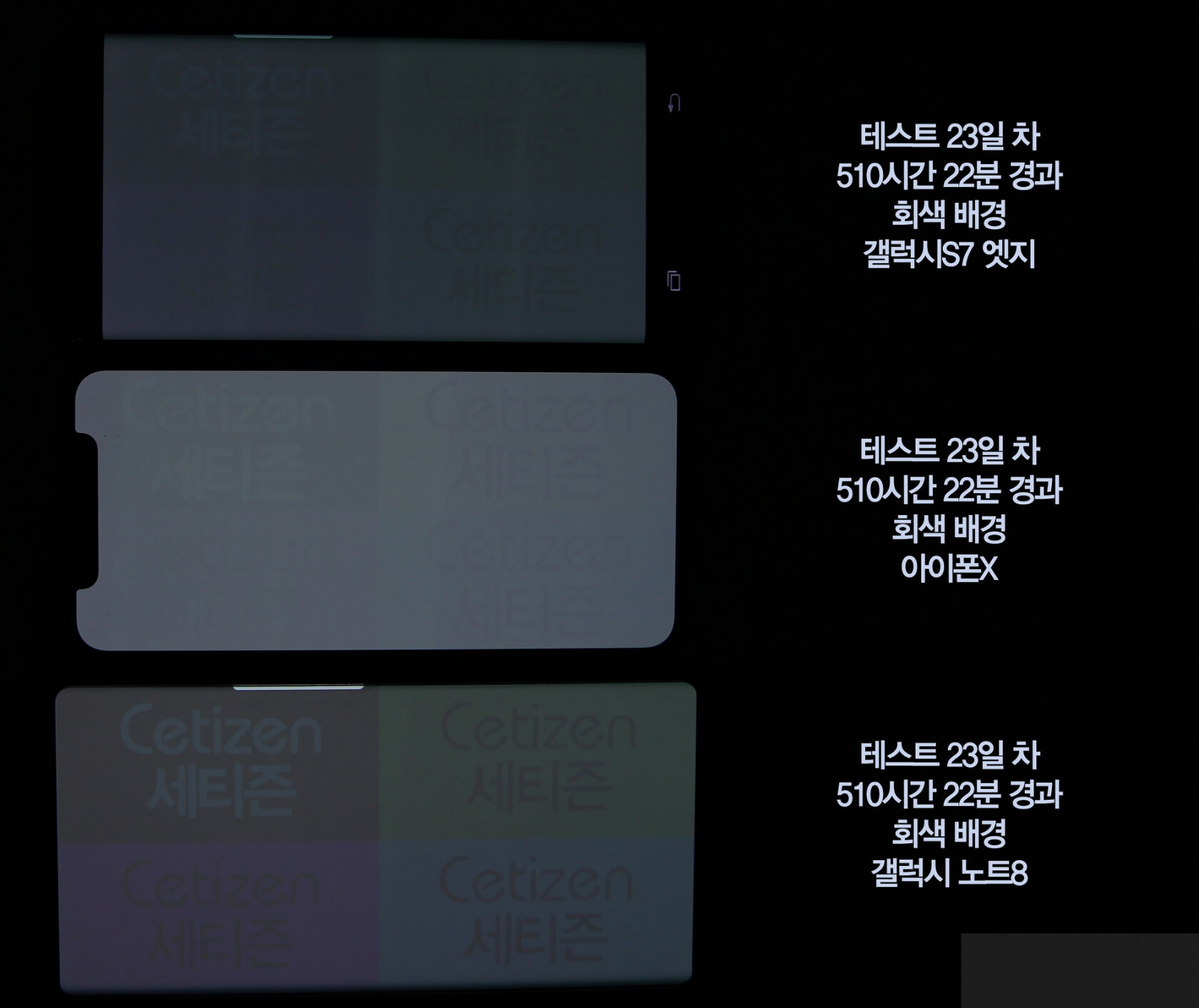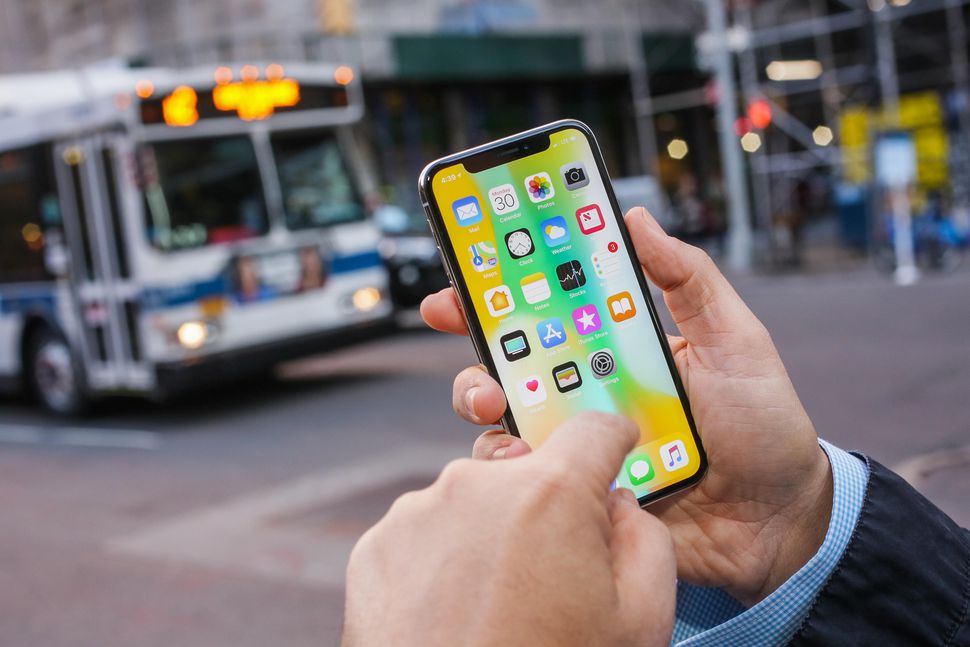As more phones are launched with OLED displays, burn-in problems have become even more relevant. As part of its ongoing iPhone X review, Korean tech site Cetizen tested Apple's handset against Samsung's Note 8 and S7 Edge in a burn-in test, and it was the iPhone that came out on top.
The experiment involved maintaining a static image on all three phones for 510 hours while at full brightness. After 17 hours, the iPhone X started showing the first signs of image retention, but the damage wasn't excessive enough to be noticeable during everyday use.
At the 62-hour mark, the Note 8 suddenly started suffering burn-in. At this point, it was Samsung's device that displayed the most obvious image retention. When both phones were shown to users, they were able to spot the burned parts of the Note 8's screen but couldn't identify them on the iPhone X.
The Note 8 had the worst burn-in by the end of the test, showing a fairly clear ghost image. The two-year-old S7 Edge did a lot better but was still bested by the iPhone X. Ultimately, all the handsets performed well---it's unlikely that any users would leave the same image on screen for days at a time.

Back in November, Apple claimed it had engineered the iPhone X's Super Retina display to be the best in the industry in reducing the effects of OLED burn-in. But the company still warned users not to display the same high-contrast image for prolonged periods of time.
One of the several display problems reported in the Google Pixel 2 XL was screen burn-in after a short period. The company later released an update that addressed the issue.
